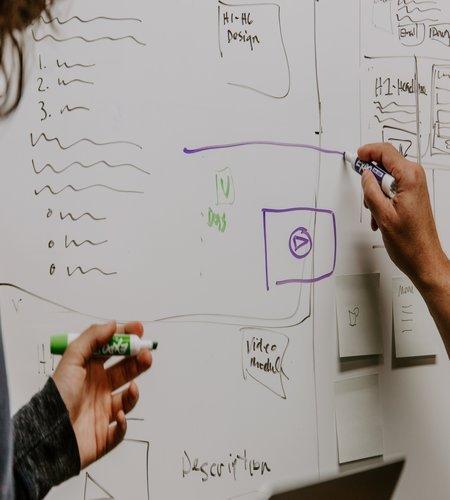How do you get customers to buy from you without lowering your price? Use these 7 science-backed psychological tricks to price your products.
Is there a way to price products and services so consumers can willingly buy without feeling like they are paying too much?
The question is what I intend to answer in this piece.
Let’s face it. You wished there was a magic wand you can swoosh three times, say abracadabra… and boom, have consumers falling over themselves to buy your products and services.
Want to Grow Your Real Estate Business? Download the Complete Grant & Funding eBook for instant access to grants, guides, and more. 80+ Grant and Scholarship Opportunities (FG, State-by-State, General & Underrepresented Groups Scholarships, Plus Grant Writing Checklist). 900+ Copies Sold Already. Get Your Copy Now
Imagine if this magic wand could make customers buy regardless of the price you slap on the product.
What would that do to your revenue?
How would having such power make you feel? Powerful? Confident? Assured?
What would it do to your business? expand? hire more employees?
Well, as it turns out, there’s no physical magic wand anywhere. But that’s not to say you can’t sell your services at your desired price.
The catch is that you will have to learn some sneaky mind tricks most top marketers and businesses use to sell high-priced products.
You may like: 5 Essentials Tools for a One-Man Marketing Team
I know presenting this idea the way I did above makes it appear like some illegal, dark-world stuff. Don’t worry; it is all legit. And if it makes you feel any better, all the big brands you love are using the same sneaky mind tricks to sell you every single time.
Come to think of it, who wouldn’t love to master these psychological tricks to sell a ton of their services or products- legal or not?
Now I’ve primed you good for the big reveal, let’s dive in.
Talking of priming, do you know you can use ‘Priming’ to sell your big-ticket services or any product, as the case may be?
The Hidden Priming Power of Numbers and Words
Many of us think we are rational, and that our decisions and behaviors (read: buying habits) are governed by our conscious minds.
We give so much power to ourselves, assuming that we are above influence from external sources. Or, in cases where we acknowledge external influence, we play down just how much we are being influenced.
But, most times, though subtle, we are being influenced. And ‘priming’ is an effective, under-the-radar technique to manage someone else’s behavior.
While writing this piece, I decided to try out a quick experiment. So, a colleague is sitting right across me, let's call him Daniel. I walked over to him and started small talks. I steered the discussion to expensive real estates in Lagos. No time during the talk did I ever mentioned Banana Island. After a while, I returned to my desk. I steered the discussion to expensive real estates in Lagos. No time during the talk did I ever mentioned Banana Island. After a while, I returned to my desk. I steered the discussion to expensive real estates in Lagos. No time during the talk did I ever mentioned Banana Island. After a while, I returned to my desk. I steered the discussion to expensive real estate in Lagos. No time during the talk did I ever mention Banana Island. After a while, I returned to my desk. Here's where it starts getting interesting. After a couple of minutes, I looked up and said Banana. You wouldn't believe what happened next... ...Daniel, without thinking, responded, "Island." It was so surreal. While I understood what was happening out of curiosity I asked Daniel why he didn't say a fruit or yellow or something else or just kept silent? After thinking about it for a while, he said, that was what came to his mind.
The story above, while anecdotal, actually happened, and it highlighted how effective subtle psychological cues are.
When used correctly, you can influence what someone thinks, how they behave, and even the things they buy – all the while having them believe it was their conscious rational mind at work.
But how do you use priming in your pricing strategy? We’ll get to that, but first:
What exactly is priming in marketing?
Here are some excellent definitions of priming, I found online:
According to marketingsociety.com:
Priming is when our brains make unconscious connections to our memory so that “exposure to a prime increases the accessibility of information already existing in the memory.”
Psychologists Julia Huang and John Bargh defined priming as:
“the passive, subtle and unobtrusive activation of relevant mental representations by external, environmental stimuli, such that people are not and do not become aware of the influence exerted by those stimuli.”
Madeline Ford, writing for Motive Metrics, beautifully explained priming for regular folks:
Priming is what we call it when exposure to something influences the behavior of an individual later on, without that individual being aware that the first thing is guiding their behavior to a certain extent
From the definitions above, the key features of Priming include:
- Exposing the target audience to subtle cues or context.
- The cues must be related to the desired behavior. This way, the brain can make a connection between the cue and appropriate stimuli. Remember the story I told you about the little experiment I did where I discussed expensive real-estates with Daniel?
- Finally, creating a conducive environment in which the priming works – could be as simple as saying “banana” after discussing real-estates with Daniel.
Recommended for you: Get instant access to free business templates + 12 months marketing and social media plans to grow your business in 2023.
How does priming work?
When a word, image, sound, taste, smell, or even physical movement elicits an associated response – that’s priming at play.
But what’s happening behind the scene? why does priming appear to work?
The answer lies in understanding how our brain stores and retrieves information.
While I’m no expert on how our brains process and store information, here’s a general gist. If, however, you need a more in-depth article on the topic, read this.
Suppose you are exposed to sensory stimuli from any sense organs like images, audio, touch, smell, or taste; these stimuli travel as an electrochemical pulse to brain cells.
The brain processes these impulses and files them away by associating the new information with related information it already has.
Priming relies on the information the brain already has to gently guide someone to a particular reaction.
When an individual who is primed for a particular stimulus is exposed to a related impulse, the part of their brain where the information is stored gets activated.
Nobel laureate Daniel Kahneman says:
an effective prime needs to be strong enough to impact behaviour, but not so strong that it enters conscious thought – the effect must remain subconscious.
So, how do you use priming to price your products?
At this point, I bet you’re itching to get some how-to tips on using priming in your pricing.
1. Position low prices towards the left
Consider this, when you read or hear someone say, “I just got UP graded or DOWN graded” what comes to your mind?
UP graded connotes ‘good qualities, ‘ right? You think, ‘oh, this has positive attributes‘.
And, DOWN graded has a negative ring to it.
You instinctively associate UP with good and positives and DOWN with negatives. Now, whenever you’re primed with the UP or DOWN concept, it triggers an association with ‘good’ or ‘bad.’
You see, we now know from research that people often associate certain concepts with directional cues (Sources).
Interestingly, it is the same thing with numbers. According to the research by Dehaene, Bossini and Giraux (1991) people process numbers on an imaginary horizontal line, with the numbers growing larger from left to right.
So, what has this got to do with pricing?
Here’s the thing since we process numbers from left to right, when you position your prices on the left-hand side, it tricks consumers’ minds into seeing the number as smaller than it actually is.
Be sure, though, not to abuse this… don’t try to position all prices on the left. Only use the trick when you already have a small price to be effective.
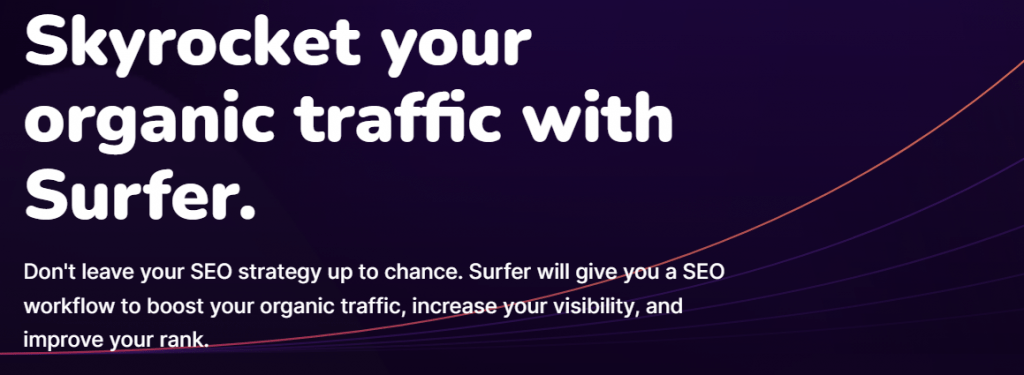
2. Use the Good-Better-Best pricing strategy
When faced with the decision to choose between two products of similar features, consumers, more often than not, will go for the less expensive item – all things being equal.
Now, this presents a difficult dilemma for businesses whose products and services are increasingly commoditized – that is, competing on price.
But what if there’s a way to offer your products and services without lowering your price, regardless of what competitors charge?
What if there’s a way to bump up the perceived value of your products so you are not forced to compete on price?
Enter the Good-Better-Best (GBB) pricing strategy.
Ever have to decide whether to buy a basic, business, or premium plan when making a purchase?
Usually, these different price ranges are for the same product or service. The only difference is in the number of features you get from each price plan.
The basic or starter plan is just that basic, with no frills and whistles. Sure, you can get your work done using the basic plan. And, it is often the least priced.
The next plan, or business plan, usually has all the features of the basic plan plus extra features, which justifies the increased price.
The premium is the top-level offering with all the features found in the business plan plus extra features. And is usually priced way above the basic and business plans.
This tiered-price plan is a classic example of the Good-Better-Best pricing strategy.

Why is the Good-Better-Best Pricing Strategy Effective?
When you implement the GBB pricing strategy, you essentially give your customers options.
Remember, people like the feeling of being in control. A tiered price plan essentially gives your customers the power of choice – which they subconsciously interpret to mean being in charge.
Tiered pricing is a great way to attract new high-paying customers while at the same time retaining old, price-conscious ones. You don’t have to lower or increase your price across the board with this strategy.
However, the trick is to balance creating new offerings and pricing them correctly.
If the Business and Premium plan offerings are not seen by customers to be worth the extra money they are paying, they would likely trade down.
You Might Also Like: The Top 15 Small Business Challenges and How to Navigate Them
Good examples of Good-Better-Best pricing strategy in action
Cable TV provider DSTV is an excellent example of a company that has effectively implemented the GBB strategy.
They have 8 packages ranging from NGN1,800 to NGN 15,800. With these different packages and price points, anyone can enjoy their content regardless of buying power.

Chicken Republic’s combo package is another classic example of the tiered pricing package.
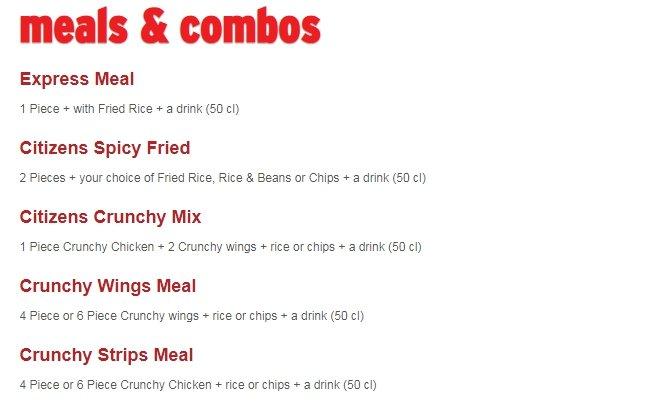
Another company killing it with the GBB pricing strategy is Siteground, a web hosting provider that provides fast and reliable hosting services to its clients.
Customers can choose between three different plans that meet their hosting needs.
3. Use high precise numbers to anchor consumers
Anchoring is another dirty little secret marketers use to price their products and services.
To understand how anchoring works, we’ll have to backstep a bit to take a sneak peek into what’s happening in the customer’s brain when they are exposed to product prices.
From experience, we know customers are more willing to buy when they feel they are getting a fair deal in relation to the perceived value of products.
We also know that customers feel real pain when making payments, especially if the product is expensive. Researchers have shown that our brain’s pain center is fired when we pay for our purchases.
When pricing your product, you want to make sure that:
- Customers feel they are getting a fair deal or even a bargain
- And that the price bypasses or eliminates, or reduces the pain they feel when paying for their purchases.
How do you accomplish that?
Enter price anchoring.
Ever had the chance to watch Apple executives, including Steve Jobs, introduce new products? Here’s Jobs’ keynote address while introducing the iPad.
Recommended For You: Get Steady Streams Of Organic Leads to Grow Your Business this New Year
Apple price anchoring trick at work
Apple often relies on price anchoring to trick our brains into accepting higher product prices. And, if the value of Apple and the popularity of Apple products is anything to go by, the trick sure does work.
What exactly, is price anchoring?
Deya Bhattacharya writing for feedough.com described anchoring as:
A cognitive bias which describes the tendency to rely heavily on the first piece of information offered in an interaction.
This initial information, or anchor, establishes a frame of reference and decision makers base their decisions around that anchor.
I also love this explanation given by Eric Yu (priceintelligently.com):
Price anchoring refers to the practice of establishing a price point which customers can refer to when making decisions.
Every time you see a discount with “
$100$75”, the $100 is the price anchor for the $75 sales price.
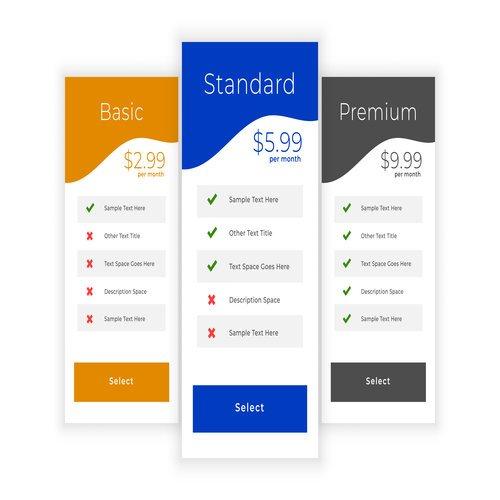
Price anchoring means subtly increasing customer expectations on what a particular product or service will cost by exposing them to a higher number than the actual price.
Why does price anchoring work every single time?
William Poundstone, author of the new book Priceless: The Myth of Fair Value (and How to Take Advantage of It), argued that we are susceptible to suggestions, especially when estimating the price of something.
“Any related value that you hear just before you make your estimate really does have this big statistical impact on what number you’re going to estimate.”
This phenomenon, as researchers found, is a result of how our brain process information.
Back in the ’70s, two researchers, Daniel Kahnman and Amos Tversky began researching an odd pattern in human behaviors: why we tend to always repeat the same mistake repeatedly.
The researchers found that our errors are so consistent that they can predict them. This little ‘glitch’ is a result of how the brain functions.
You see, the brain is so lazy (or efficient if you like) that it just wants to make decisions quickly and as fast as possible.
So, instead of thinking things through logically, it would just jump to conclusions with limited information.
To our ancestors, that’s a good thing – even life-saving. But, for us, it doesn’t serve us well.
The brain uses shortcuts to arrive at decisions. The problem, however, is that these shortcuts our brains use the result in bias in our reasoning. Unfortunately, smart folks have figured out how to utilize these biases to manipulate our perception of reality.
So, that is why, when we are first exposed to a higher number or price, we are more willing to pay for products with prices closer in value to the first price we saw – we were primed to think the product would cost more.
How do you use price anchoring to increase sales?
As the digital marketing manager at a consultancy business focused on helping secondary schools become profitable, Ferderick Chinasa, was tasked with generating quality leads for their free seminars.
Instead of driving traffic to the Free seminar signup page, he designed and tested two new landing pages. But, this time, he included a price.
He wanted to see if people were going to pay for a seminar that was originally supposed to be free. What he discovered was interesting:
Let’s label pages A and B. Everything on both pages was the same except for an additional canceled price on page B. See page B below:
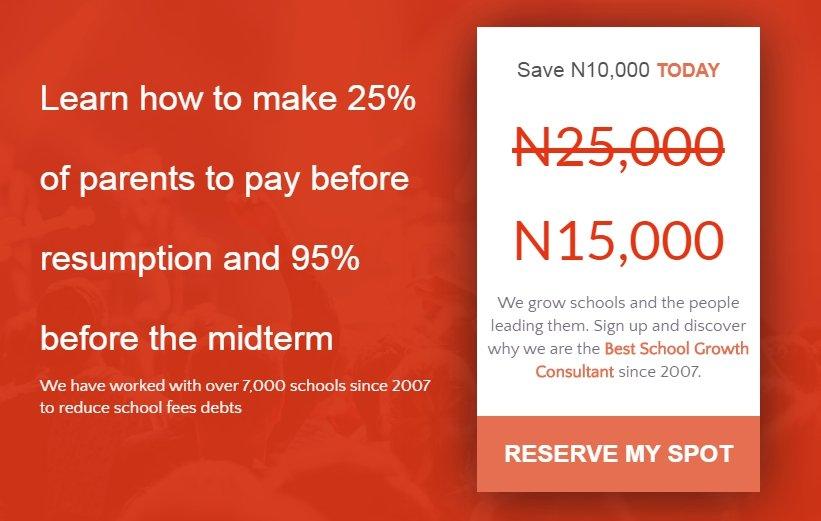
Results:
When tested across the same audience, using the same budget and time frame, he found that page B converted 125% more than page A and even the Free landing page.
Explanation
The canceled higher price (N 25,000) was used as an anchor to get customers to see the N15,000 as a bargain.
Another way to implement price anchoring is to create a tiered pricing plan. Let’s say you sell three different versions of the same product. Each of these products is priced at N5,000 N12,000, and N15,000.
But, your goal is to sell the N15, 000 product. When you use the tiered price plan where all the prices are displayed simultaneously, customers will tend to buy more of either the N5,000 or the N15,000.
Recommended For You: How We Made Six Figures In 21 days Just Sending Emails
Explanation
Those who buy the N5,000 products are usually price-conscious and are often after bargains. By creating a low price point, you can capture their business.
It gets interesting for the high-end buyers, who would have normally bought the N12,000 product. But, seeing they can get more value with a mere extra N3,000, they will often go for the premium product.
One final way to use price anchor to sell more is using the classic trick, placing the product you want to sell after a higher-priced item.
Have you heard the saying, “If you want to sell a N25,000 wristwatch, place it after a N50,000 necklace”?
The idea is to anchor customers’ expectations high enough with the expensive item so that it feels like a steal when they finally see the lowered-priced product.
A good example of this trick in action is when buying a car. Usually, the car salesperson shows a customer an expensive car, anchoring the perception of the price at the high end.
Then they show them mid-range cars, which seem so much cheaper than the expensive car that customers often decide to buy these.
This trick is also used in real estate listing. Real estate agents will often show you high-priced properties before taking you to moderately priced ones. A move aimed at increasing your estimation of the property.

Wrapping up on psychological tricks to price your products
Competing on price is the fastest way to the bottom. If you can master these science-backed pricing tricks, you will never have to lower your price again because of a competitor.
Understanding these simple psychological tips will give you the superpower and magic wand, if you like, to set your price at your desired point and still have customers lining up to buy from you.
Recommended For You: 10 Available Business Grants In Nigeria to Expand Your Business
Hand-Picked For You:
- FAQs: How to Start a Business In 2023
- FAQs: How to Grow Your Business In 2023
- FAQs: How to Fund Your Business In 2023

